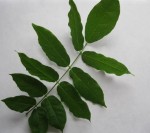 Leaves are important to plants for manufacturing food and important to the gardener for the color and texture they provide the garden. They are also important as a means of identifying a plant as their characteristics vary with the species of plant. This post will deal with the general external structure of a leaf, its venation, and form.
Leaves are important to plants for manufacturing food and important to the gardener for the color and texture they provide the garden. They are also important as a means of identifying a plant as their characteristics vary with the species of plant. This post will deal with the general external structure of a leaf, its venation, and form.
Simple leaves usually consist of a green blade that is expanded to facilitate the making of food. The blade may be wrapped around the stem, a condition known as sessile (example: grass).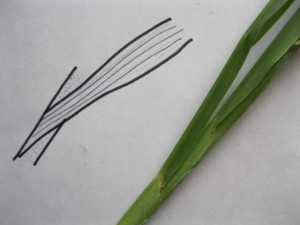
or attached by means of a stem-like structure called a petiole. A bud is found in the joint where the petiole joins the stem and is called the axillary bud. Two little leaf-like structures called stipules are usually found at the base of the petiole but may be fused together, fused to the petiole or missing. When they are present they can be important for identification.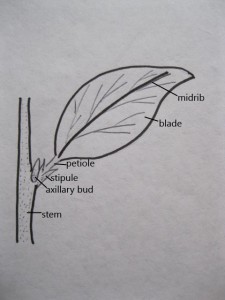
Most plants bear their leaves so that the position of the leaves is alternate on either side of the stem.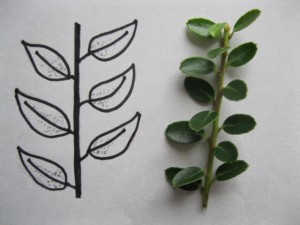
Others have leaves that are opposite each other on the stem.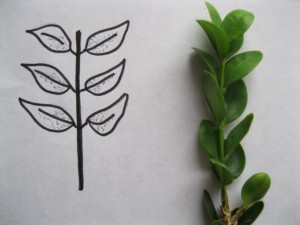
A few plants bear leaves in whorls.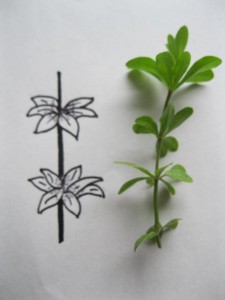
Veins that carry water from the stem to all parts of the leaf run through the leaf. The veins may be parallel as in iris,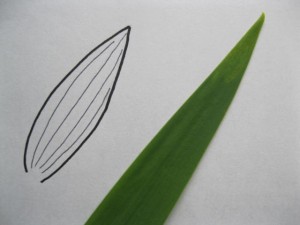
Or form a net, passing to all parts of the leaf from a large central midrib that runs down the center of the leaf blade. The veins may form a pattern that resemble a feather, in which case the venation is said to be pinnate.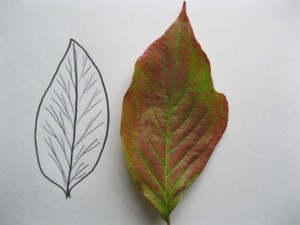
Or may form a pattern that resembles the palm of your hand, in which case the venation is said to be palmate.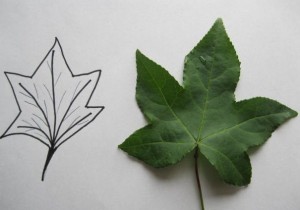
Some plants have leaves that have been dissected so that they form leaflets. A leaflet does not have stipules or axillary buds and these characteristics can be used to distinguished leaves from leaflets. These leaves made up of several leaflets are said to be compound rather than simple. Since the compounding follows the venation pattern a leaf can be pinnately compound like rose,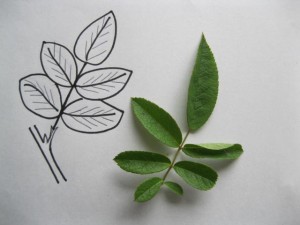
Or palmately compound, like pittosporum.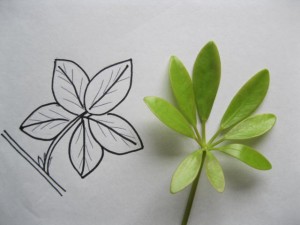
How about a little quiz to see what you picked up from this? Answers appear at the bottom of the post (scroll down).
1. Leaves are most important to a plant for
- a. reproduction
b. food making
c. oxygen intake
d. excretion
2. A leaf can be distinguished from a leaflet by the presence of
- a. midrib
b. veins
c. stipule
d. photosynthesis
3. The petiole
- a. protects the leaf
b. produces a flower
c. gives the leaf color
d. holds the leaf onto the stem.
4. The stipules resemble
- a. buds
b. leaves
c. flowers
d. stems
5. The leaf in picture below can best be described as
- a. sessile
b. pinnately compound
c. palmately veined
d. whorled
Answers
1. b food making
2. c stipule
3. d holds the leaf onto the stem
4. b leaves
5. c palmately veined

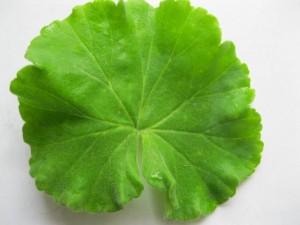
[…] Botany for Gardeners: The Leaf Part I General Characteristics […]
[…] Karen’s Garden Tips has Botany for Gardeners: The Leaf Part I General Characteristics […]